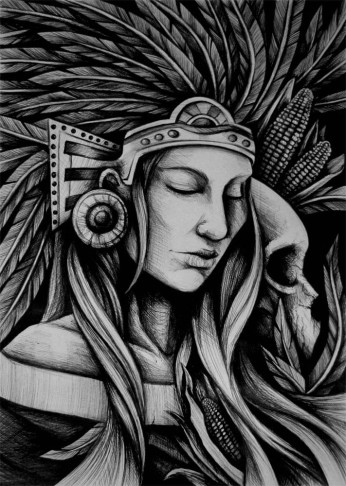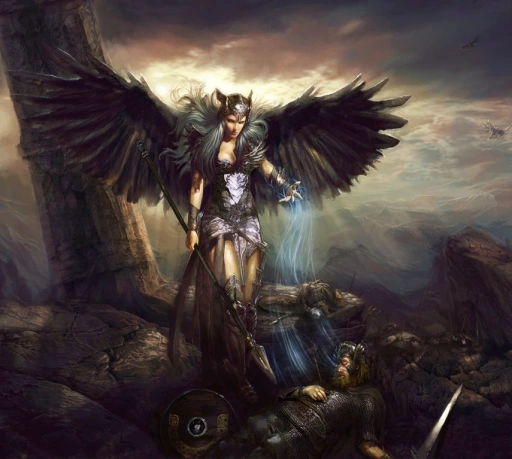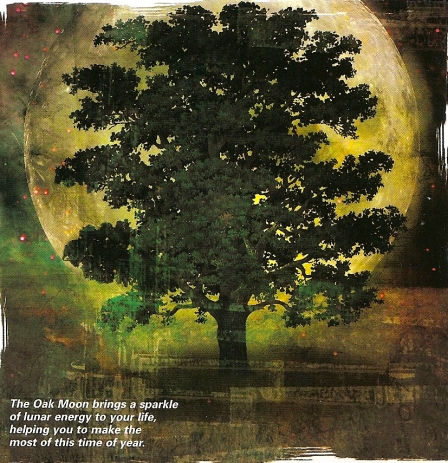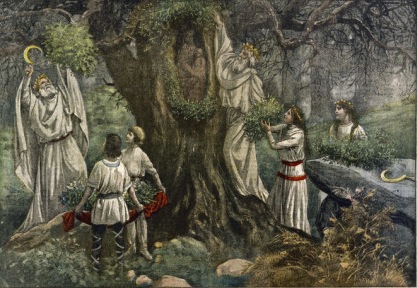“Takánakapsâluk’s themes are providence, purification, strength, thankfulness, luck and health. Her symbols are saltwater and Arctic animals. This Arctic sea Goddess rules over the successful catching of game and over personal health. Takánakapsâluk lives far beneath the cold waters, where She also receives the spirits of the dead and cares for them.
Among [Yup’ik] hunters, this was the time of year when special rituals propitiate the spirits of Takánakapsâluk’s animals, who gave themselves for the tribe’s food. Specifically, all the bladders of seals, whales and polar bears(?) were returned to Her icy waters in thankfulness. In a similar spirit, go to any open body of water and toss a small biodegradable offering to the Goddess in thanks for your food. Consider abstaining from meat today, or from some other beloved food, as a way of showing appreciation for the Goddess’s bounty.
The [Bladder Festival] traditionally included ritual fire jumping and sweat baths for purification. Try this yourself by jumping a small candle (carefully, please!) or taking a steamy shower (the Goddess is part of that water). Additionally, any show of physical prowess today brings continued strength. So, add a little exercise to your day. Take a brisk walk, do some jumping jacks. As you do, think of Takánakapsâluk filling you with revitalizing health.”
(Patricia Telesco, “365 Goddess: a daily guide to the magic and inspiration of the goddess”.)
OK, I just have to vent a bit here. Throughout this journey so far with this book, I’ve come across some really bad information (gods being portrayed as Goddesses – my main pet peeve). For today, Telesco calls today’s holiday/celebration “Kashim”. Now, kashim is NOT an Inuit or Yup’ik celebration; it’s “a building used by Eskimos as a community gathering place or as a place where men congregate and socialize.” [1]. Also, she writes about this celebration as if it is still practiced today. While there is a “Bladder Festival” that is still celebrated today, it’s not celebrated in the above fashion as she would have you think as it was originally written in her book; “it was last celebrated in the early part of the twentieth century.” [2] Also, I didn’t see mention of polar bear bladders being offered – only seal, whale and walrus bladders. What kills me is that when I Google “Takanakapsaluk”, I obviously come across other sites that have done or are doing something similar to what I’m doing with this blog – and they’ve just retyped word for word what is in the book without doing the time to actually sit and do the research as to whether or not the information is accurate or correct; it’s just bad information being passed along as if it’s fact when in fact, it’s very inaccurate and misleading. OK – thanks for “listening” – end of rant.
So, back to Takánakapsâluk. This Goddess is actually Sedna‘s Iglulik Inuit equivilant (who actually live very far from Alaska – north of Hudson Bay in the Canadian Northwest Territories actually). “Like Sedna, [Takánakapsâluk] receives the dead and causes misfortune, but is known also as a healer who helps hunters.” [3] Now, about Sedna in a nutshell: “Sedna is an important figure in Inuit mythology, but is often the case with myths and legends; there is much controversy over who She was and how She came to be. The one thing that all of the stories have in common is the fact that Sedna did not begin life as a Goddess, but at a mortal woman.
By all cases, Sedna was believed beautiful and highly desired by all the men of her village. In some accounts, She was also labeled as vain and selfish and did not feel that any of the men were good enough for Her. In other accounts, She simply found no man that suited Her wants and needs. In either case, She flatly refused to marry.
Frustrated with his daughter, some claim that Her father eventually threw Her into the sea off the side of his boat, but the girl hung tightly to the side. Fearing she would tip it over and kill them both, Her father cut off Her fingers, one by one. As they fell into the water, they turned into sea life like the seal, walrus, and fish. The creatures thankful for their birth, turned Sedna into a Goddess and gave Her dominion over them.” [3]
You can click here to read June 26’s entry on Sedna for more detailed information and other “Suggested Links” to go through for your own research purposes.
Sources:
Kuchinsky, Charlotte. Voices.yahoo.com, “Understanding the Moral Behind the Inuit Goddess Sedna“.
Took, Thalia. Thaliatook.com, “Sedna“.
Suggested Links:
Cate. Hooperbaytundra.blogspot.com, “The Bladder Festival“.
Spiritandhistory.tumblr.com, “Today In Spirit, Fes & History: 10 December – Native American/First Nations: Inuit/Eskimo Bladder Festival/Feast of Sedna/Festival for the Souls of Dead Whales“.
Stern, Pamela R. Salempress.com, “American Indian Culture: Bladder Festival“.
Tedlock, Dennis & Barbara Tedlock. Teachings from the American Earth: Indian Religion and Philosophy, “A Shaman’s Journey to the Sea Spirit Takánakapsâluk” (p. 13 – 19).
Vitebsky, Piers. Shamanism, “A summer of shamanic procedure: Combing the Hair of the Woman at the Bottom of the Sea” (p. 125).
Walsh, Roger. The World of Shamanism.
Wikipedia, “Sedna (mythology)“.



















































